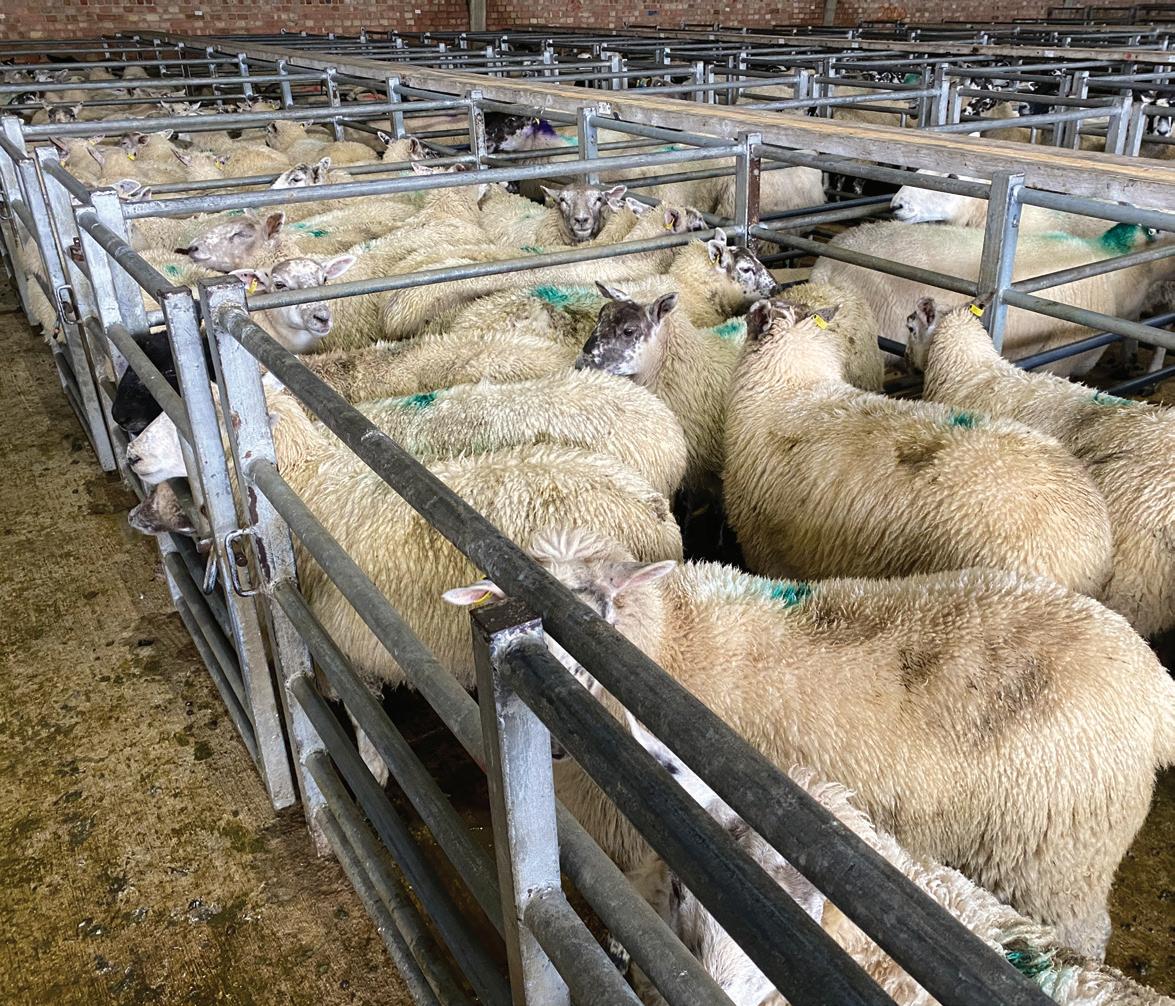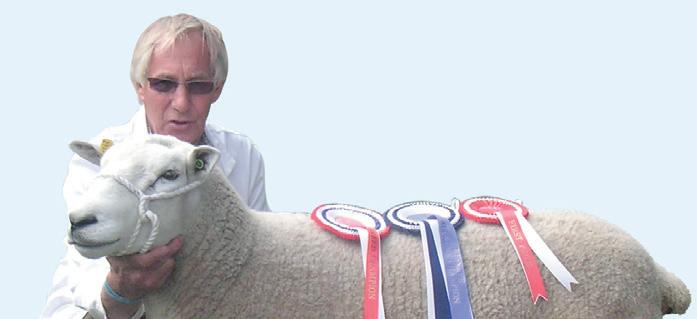
15 minute read
ALAN WEST
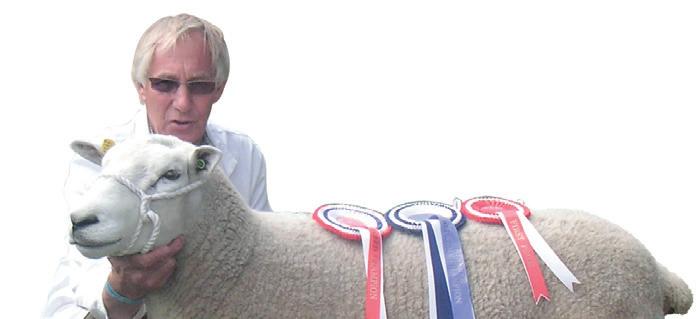


LAMBING TIME AND NEW LIFE
Lambing is for many now underway at last; it is that slightly nervous time of year when sheep producers wait, apprehensively, for the fi rst few lambs to hit the ground. It is a time that brings a conclusion to all of the hard work and planning that has been invested in fl ocks since weaning last summer; the sorting out of the fl ock, ensuring that they are in the correct condition for tupping, selecting the best rams and ensuring their condition, making sure that nutrition suits the requirements of the ewes at any point in time during tupping and pregnancy, in particular the critical fi nal trimester as lambing approaches… The list is endless. It is this list that represents a lot of commitment to fl ocks, with lambing presenting the fi nal opportunity to see the results of those eff orts.
If everything has been planned and implemented correctly, the hope is that the results show plenty, but not too many, lambs (too many triplets can present all sorts of problems), lambs that are a good birth weight, but not so big as to generate too many lambing problems, and ewes with plenty of good quality colostrum and milk, the latter two being things you cannot have too much of. The six or seven months between weaning and lambing are always a bit of a balancing act; a combination of wanting to get everything correct but not wanting to overdo it, and it is only when we have the evidence there on the ground that there is any degree of certainty that the correct balance has been achieved.
My ewes certainly played a waiting game this season, seemingly reluctant to part with their precious cargoes; they hung on as long as they could. I knew exactly which date the tups went in and, changing crayons at seven and 17 days, was fairly confi dent of when individual or groups of ewes were tupped. Scanning results certainly indicated that (at that point in time) there were no empties, a fact reinforced by the ever increasing girth of all of the ewes, particularly those that happen to carry their lambs sideways, like a pair of over-stuff ed saddlebags. All the indications were that things were proceeding very much as expected.
Experience has demonstrated that my ewes will normally lamb fairly close to the average 145 to 147-day gestation length, and as a result I was well prepared and full of expectation for some action at 145 days, but nothing. At 146 days, the fi rst ewe lambed, a lovely pair of Suff olk cross ram lambs, a good weight and mum full of milk. Great, thumbs up, here we go. And then nothing for the best part of a week, although I knew there was a group of ewes that had taken the ram in the fi rst few days of tupping.
I’m convinced that, with the combination of returning home for lambing onto some really good grass and a spell of nice warm and sunny days, they were just enjoying (not wishing to be too anthropomorphic) their last opportunity to relax for a bit longer before their new families arrived, with some going to 150 plus days, really quite unusual for my ewes. But that is sheep for you, full of surprises, part of their raison d’etre; any opportunity to either drop dead or catch you out. True to character, they decided, just as the weather changed for the worse, that it would be a really good time to up the pace of lambing; not that it seems to bother them, although, from a personal point of view, it is more pleasant doing the rounds on a nice dry, sometimes sunny, if crisp, morning, midday/ evening or night than it is in the wind and rain.
Happily, now that they have decided to get on with it, the encouraging signals and hopes from the fi rst arrivals have been fully justifi ed, with a steady stream (more of a trickle really) of good strong and lively lambs arriving, lambs that are up and suckling in no time, with attentive mums absolutely full of milk. As for the weather, lambing outside it might not bother the ewes and lambs, but I for one really do appreciate the luxury of a small shed with mothering pens. With new arrivals, once they are licked dry and their mums are drifted out and penned up for 24 to 36 hours, being under cover certainly makes all of the routine tasks, navel treatment, weighing, tagging, tailing, etc. nice and easy, with the additional benefi t (to me at least) of being carried out in a warm and dry environment.
At lambing time in particular, we do need to look after ourselves, something that maybe we are not very good at. There are many sheep keepers, currently lambing or about to lamb, who operate on their own and who would, if anything untoward should happen to them, be in real trouble, or their lambing ewes would be. I know one case of a shepherd who had a positive Covid-19 test in the middle of lambing. Having tested positive he was ordered, under threat of prosecution, to self isolate even though he had no cover and was only visiting his lambing ewes. Nevertheless he was ordered to stay at home, which unfortunately was not where his fl ock was lambing. How many others, not necessarily due to Covid-19 but possibly other health issues, could be in the same position?
Sheep farmers are generally busy people due to a range of factors, and are often times poor, along with others within the sector; a situation that is exacerbated at certain times of the year when there is a lot to be done within relatively narrow windows of opportunity, windows that are often constrained by factors completely beyond our control. We have all been there. Sadly some of those time pressures are to a certain extent self imposed; as an industry we do have a tendency to make rather too much of a virtue of hard work, sometimes to the point where we feel an element of guilt if we are not busy. In addition, our working practices often refl ect that obsession with hard work; we have forgotten, particularly when in work mode, how to make the most of a bit of down time.
In reality if the opportunity arises there is nothing wrong with taking a bit of time out to refl ect and relax a little; it may not be easy to fi nd the time, but it is a lot easier if a conscious eff ort is made to make the time. There is also nothing wrong with looking critically at some of our working practices; there is no point in working hard simply for the sake of hard work (it happens). “Work smarter, not harder”, as the saying goes. Mental health amongst farmers has been relatively high profi le recently and for good reason;



ALAN WEST
Sheep farmer
we have as an industry been experiencing relatively diffi cult and uncertain times, but simply taking a bit of time to refl ect and relax can really help put problems into some sort of context and perspective. I have frequently heard it said of young entrants to the sector, and I’m sure I have been guilty of it myself at times, “they just don’t see work”. That may be a fair criticism if there are obvious tasks that need to be addressed, but maybe, just maybe, if they have completed their work satisfactorily, it is simply that we have an issue with them still having the capacity to enjoy a bit of down time, something that many may have forgotten how to do.
The concept of being busy at all times is very much a product of the industrial revolution; sayings such as “the Devil makes work for idle hands” were simply attempts to justify what amounted to exploitation of factory and mill workers in the 18th and 19th centuries, but it is a concept that has sadly stayed with us. Pre-industrial agricultural workers were not idlers, they were not lazy. It was not an easy life; they worked hard, very hard when required, but they also knew how to enjoy time doing nothing. Shepherds, in particular, were often paid relatively well (when compared with other agricultural workers), for their skills not their time; for much of the year they would have spent hours alone with their fl ocks, keeping an eye out for problems but also taking time to enjoy their environment. Many were very good countrymen, understanding and enjoying the countryside they lived and worked in. But they were fully prepared, when required by circumstances such as at lambing, to commit to long and demanding hours (both physically and mentally) applying their skills in the care of their fl ocks.
I recognise that I am now, having retired, in the fortunate position of not only being relatively timerich, but also able to a certain extent to determine my own timetable. In spite of this there are still those occasions when I wonder how I am going complete all that I need to do on a particular day and I still have a lot that I want to do (even if I don’t need it). As a child of the forties I have also reduced fl ock size to rather more manageable proportions (a somewhat roundabout way of saying that tasks, for some reason, seem to take a little longer than they used to); the net result is that I am now able to enjoy my sheep more. Along with this I have also learnt how to enjoy time doing nothing of note, something that took a while and did not come that easily. For example, I am now quite happy to spend time when I can, simply watching the fl ock, learning from my sheep. Animal behaviour has always been a particular interest of mine and spending time simply watching is a calm, relaxing time, but it also has its benefi ts. Having a greater depth of understanding of the fl ock and of individuals within the fl ock can make moving and handling sheep much easier and stress free for both the sheep and myself, so maybe it is not really wasted time.
VET DIARY AVOIDING CALVING PROBLEMS
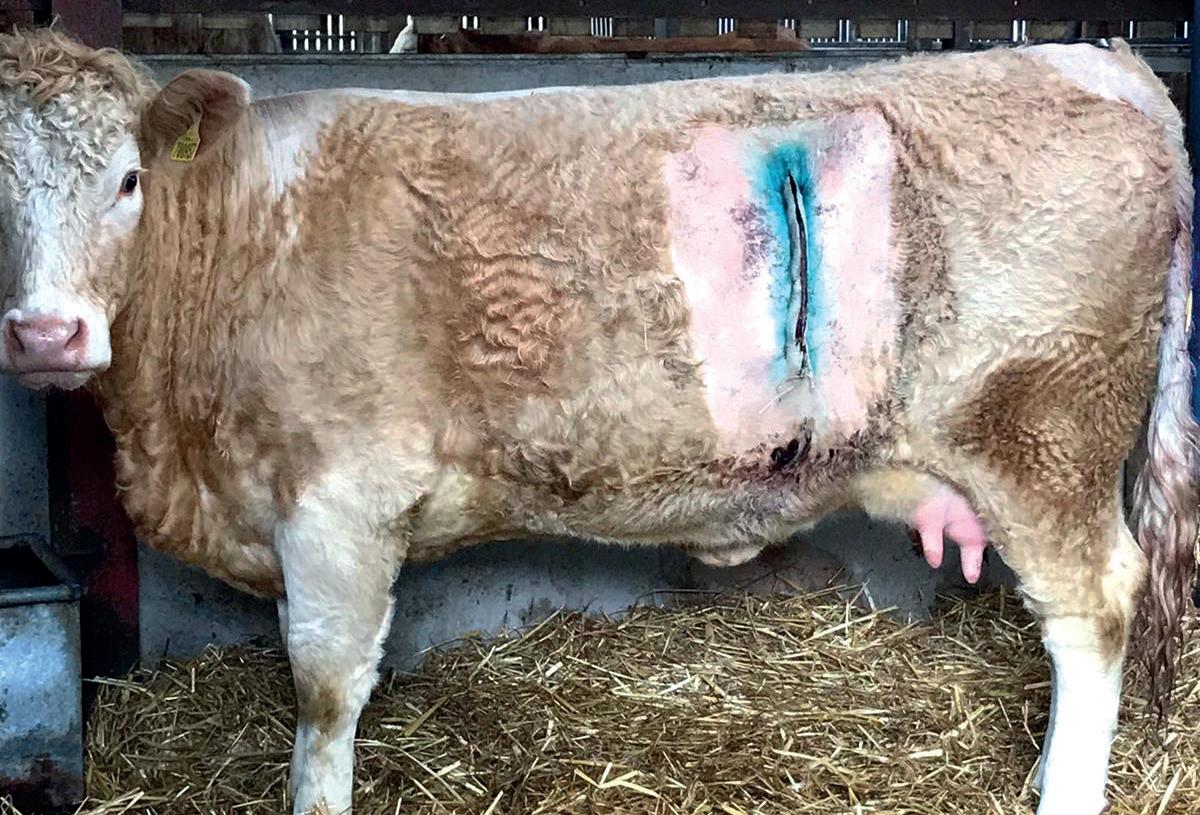
As I enter my fi rst spring as a graduated farm vet, I didn’t believe my colleagues when they told me how busy we were going to be over the coming months. How naïve I was to think that they were exaggerating! Something that I’ve noticed when talking to the other vets is just how many problem calvings we’ve seen this spring. This had me wondering how I could advise our clients on managing their herds to avoid losses associated with diffi cult calvings.
Replacement heifer selection is vital to ensure you have a fertile and easy calving herd. A heifer with a small pelvis giving birth to a large calf is the perfect recipe for dystocia. Performing “pelvimetry” between 12 and 15 months of age can help identify heifers with abnormally small pelvic measurements that are not ideal candidates as replacements.
Management of replacement heifers starts when they are born to achieve 65% of mature weight by fi rst service and 85% of mature weight at fi rst calving. For a mature cow weight of 650kg, this equates to a minimum of 420kg at service and 550kg at calving. Hitting these targets to calve down at two years will increase their lifetime economic effi ciency, as opposed to calving at three years. Onset of puberty is largely related to bodyweight so feeding good quality silage at weaning, supplementing with concentrates and early turnout to spring grass should allow your heifers to reach target weight by service at 15 months.
Sire selection for easy calving is important in heifers. Using AI will allow selection of the best genetics from maternal sires to breed your replacement heifers. Cliff e Vets are now off ering AI services to our beef clients, from bull selection right through to pregnancy diagnosis. Synchronised AI allows you to frontload your calving block with heifers from whom you will be drawing your replacements, meaning their calves will be older and heavier at fi rst service.
Farmers also need to look at nutrition and body condition score (BCS) from housing onwards. Spring calvers should calve down at a BCS of 2.5, meaning they should be at target BCS at least four weeks pre-calving. If the BCS is low, then she will produce poor quality colostrum and have a slower return to service. A high BCS will result in dystocia and a slow return to service. Over-restrictive diets to reduce BCS will result in weaker calves, uterine inertia and dystocia.
Choosing the right replacements and managing your herd for easy calving is multifactorial and starts from the moment your heifer calves hit the ground. Calving at two years old is a major driver of suckler herd profi tability. However, this needs careful management and requires some attention to the fi ner details to ensure that they meet the necessary targets, and crucially get back in calf in good time.
ISABEL FIELD
BVetMed MRCVS Veterinary Surgeon at Cliff e Veterinary Group
T: 01273 473232 E: Isabel@cliff evets.co.uk
www.cliff efarm.co.uk
FROM STRENGTH TO STRENGTH
GRAHAM ELLIS FRICS FAAV FLAA
For and on behalf of Stanfords
T: 01206 842156 E: info@stanfords-colchester.co.uk
www.stanfords-colchester.co.uk
With spring now upon us, the grass beginning to grow and crops looking better by the day, it is pleasing to report that the sheep trade continued to go from strength to strength during the past month. It is remarkable how dear the sheep have become, with week after week of old season lambs increasing per head at levels which would not have been dreamed of at the back end of 2020.
Lambs are averaging approximately £20 per head more than 12 months previously, and as this report was being written in the second week in March we hope the anticipated usual increase in trade will bring sheep to even greater levels. One word of caution – sheep meat is now very expensive in real terms, comparing dead weight prices of £6kg plus to pork prices in the region of 130p/ kg to 150p/kg.
Certainly the live markets have been pulling the sheep prices up, proving the positive nature of the livestock markets to react to the trade.
Plenty of lambs are being seen at £140 to £155 per head and averages of over 300p/kg liveweight. On the back of the old season lamb trade, the cull ewe trade
westpoint farm vets 100% Farm Vets
Supporting British Livestock Agriculture Since 2000
Our practices provide the following services in Kent, Sussex, Surrey & Hampshire:
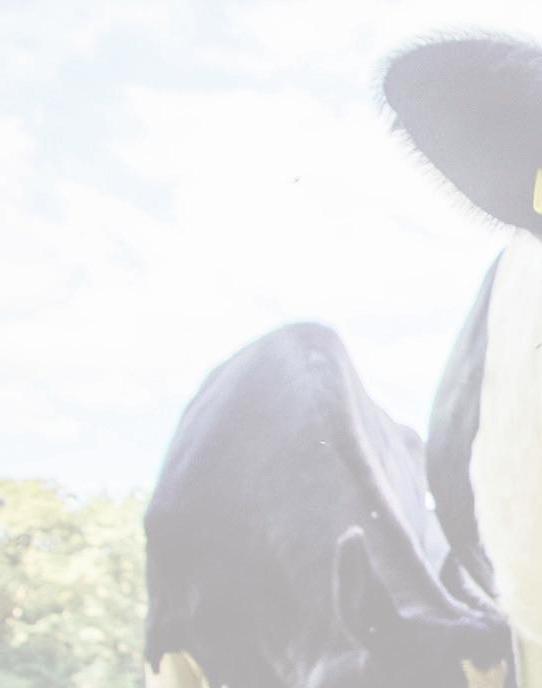
Routine and first opinion work Local 24 hour emergency cover Direct line to experienced vet at any time - free of charge Flock and herd health planning Routine fertility and scanning Milk quality monitoring Mastitis consultancy Bull and ram testing Foot trimming & mobility services Benchmark and discussion groups Farmer education and training
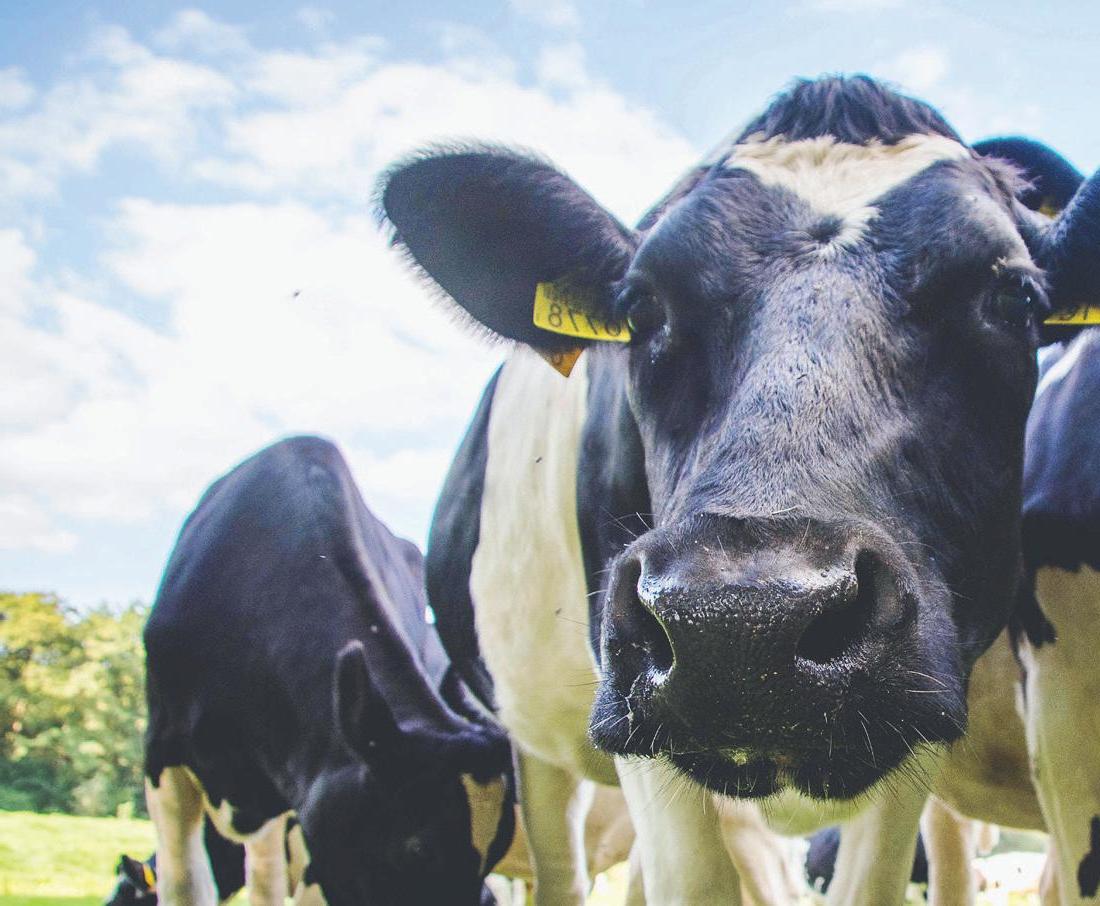
Contact your nearest practice for a FREE initial visit
Westpoint Horsham
covering Surrey and West Sussex Westpoint Sevenoaks
covering North Kent and East Sussex 01306 628086 01959 564383 Westpoint Winchester Westpoint Heathfield Westpoint Ashford
covering Hampshire covering East Sussex covering Kent and East Sussex
01962 779593 01435 869047 01306 628208
westpointfarmvets.co.uk
also increased substantially.
New season lambs are coming forward in very small numbers, although these numbers are likely to increase as Easter approaches; it will be interesting to see what the Easter trade is. With an anticipated large number of hoggets already cleared, there is a possibility that there will be a shortage of sheep meat at the end of April and the beginning of May, which may also affect trade.
The prime cattle trade is also seeing prices well above 12 months ago; indeed, numbers are totally inadequate for current demand in all sections. More cattle could easily be sold to advantage in the live rings at all markets. Colchester Market is seeing strong demand for all best butchers’ beasts and even heavy cattle are selling at levels well above 12 months ago with 240p/kg to 250p/kg and £1,500 to £1,600 regularly seen.
The cull cow trade is extremely good and again is increasing weekly. With the demand for processing meat becoming more likely with the hopeful reopening of retail outlets following the Covid-19 pandemic, we look forward to an increased demand throughout.
Again, the live markets are leading the way with pricing.
Store cattle are desperately short again and more could be sold to vendors who have sold their prime cattle well. We look forward to a continued buoyant trade for beef and lamb.
Hopefully the pig market will also see a lift. Due to the very short numbers of pigs sold in live markets it is difficult to give indications of trade, although selling dead weight pork has not been a great pleasure over the past few months. Trade has been lacklustre to say the least, and indeed supplies are well exceeding demand. As stated above, with pork trading at about 25% of the level of deadweight lambs, surely there must be a case for a substantial increase in pork prices.
With the extremely high cost of feed inputs for pork, an increase is desperately needed by pork producers. Again, with the hope of the lifting of lockdown restrictions, the catering trade will see a buoyant rise which will hopefully also benefit the pork trade. We are, after all, nearing the barbecue season.
The cull sow price is seeing a steady increase at the time of writing, with more demand as numbers tighten. A welcome sign of better things to come.
With the better weather in mid-March, it was good to see land work on the arable farms progressing well. The first sugar beet is due to be drilled in late March, but there were still quite large areas of sugar beet to be lifted. The extreme wet weather had not helped.
To finish on a positive note, we are moving forward with increasing sheep and beef prices, pork hopefully on the lift and arable crop prices looking good with the weather improving to allow normal work to proceed.
